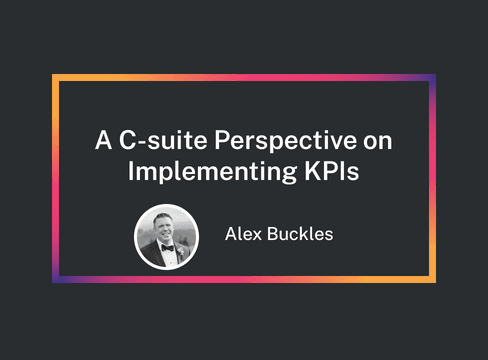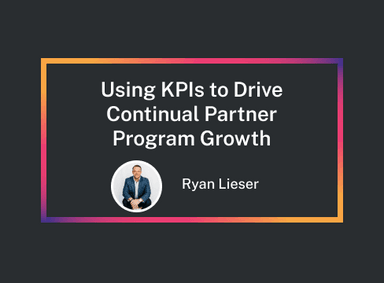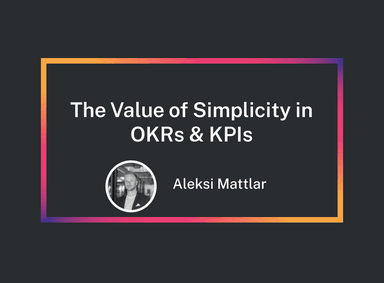A C-suite Perspective on Implementing KPIs


This article is part of our Q1 spotlight on Partner Program Planning, Goal Setting, and Forecasting. Learn more in the series introduction.
Based in Orlando, Florida, Alex Buckles is the CEO and founder of Forecastable. He has spent the better part of two decades in sales working in various companies, from large organizations to small businesses. Today, Alex joins us to discuss how he uses KPIs to align his team at Forecastable.
KPIs at Forecastable
At Forecastable, KPIs start in the c-suite. Alex Buckles explained, “We look at our company objectives and goals for each quarter. We bring department heads into these conversations to ensure our objectives are achievable. After we have our overarching organizational objectives set, leaders collaborate with their teams to ensure realistic goals are established. I balance sales and partnerships goals by ensuring individuals’ goals are aligned with company goals. It’s up to me as a leader to show both sides how they benefit from that.”
When it comes it checking in on progress, Alex shared, “We set quarterly objectives and meet halfway through the quarter. At the end of the quarter, we review and set new objectives. Don’t be afraid to get rid of your goals if priorities have shifted — don’t have them for the sake of having them.”
Tactically, Alex shared his team uses many tools already, so they keep goal tracking simple. “You don’t need much to track KPIs, especially for overall corporate objectives. Each individual shouldn’t have a lot of KPIs, so we lean toward something as simple as a spreadsheet for tracking.”
Leveraging KPIs for Cross-functional Collaboration
While KPIs can be valuable for aligning your team and improving cross-functional collaboration, you need to make sure you’re sharing the benefits with all teams. Alex explained, “KPIs only level up the cross-functional communication if they’re shared across the team. At Forecastable, we offer a 5% kicker for AEs in partner-involved deals. With our partner org focused on partner-involved deals and co-selling, they aim to hit 25% closed-won. If our partner team hits that deal number, the AEs get another 5%. Now you’ve aligned both teams toward a common goal — increasing partner-involved deals. If I’m not making a plan to help them hit a number, I won’t hit mine. It works internally too.”
A Three-step Process for Effective KPIs
Alex’s most important piece of advice is to avoid setting KPIs for the sake of having KPIs. He explained, “Individuals who have never set KPIs before may just be making them. Instead, you need to think about why they’re important to your role.”
Alex broke down his three-step process for setting KPIs, emphasizing the importance of keeping it simple. Consider:
- What am I trying to accomplish over time?
- How can I get there? What activities do I need to do?
- Leverage KPIs to see if you’re on track to getting there.
With Alex’s leadership and approach to goal-setting, we’re sure to see Forecastable grow in the years to come!
Learn more about getting started with KPIs and OKRs at your organization when you download Strategies for Achieving your Partnerships Goals. Many experienced partnership professionals have joined us to share their planning, goal setting, and forecasting insights. Be sure to explore all of the interviews we’ve published this quarter.
Partnership Leaders connects professionals from modern technology companies looking to advance their careers, expand their partner programs, and grow their organizations. Apply now to join over 700 partnership professionals sharing diverse insights and experiences.


